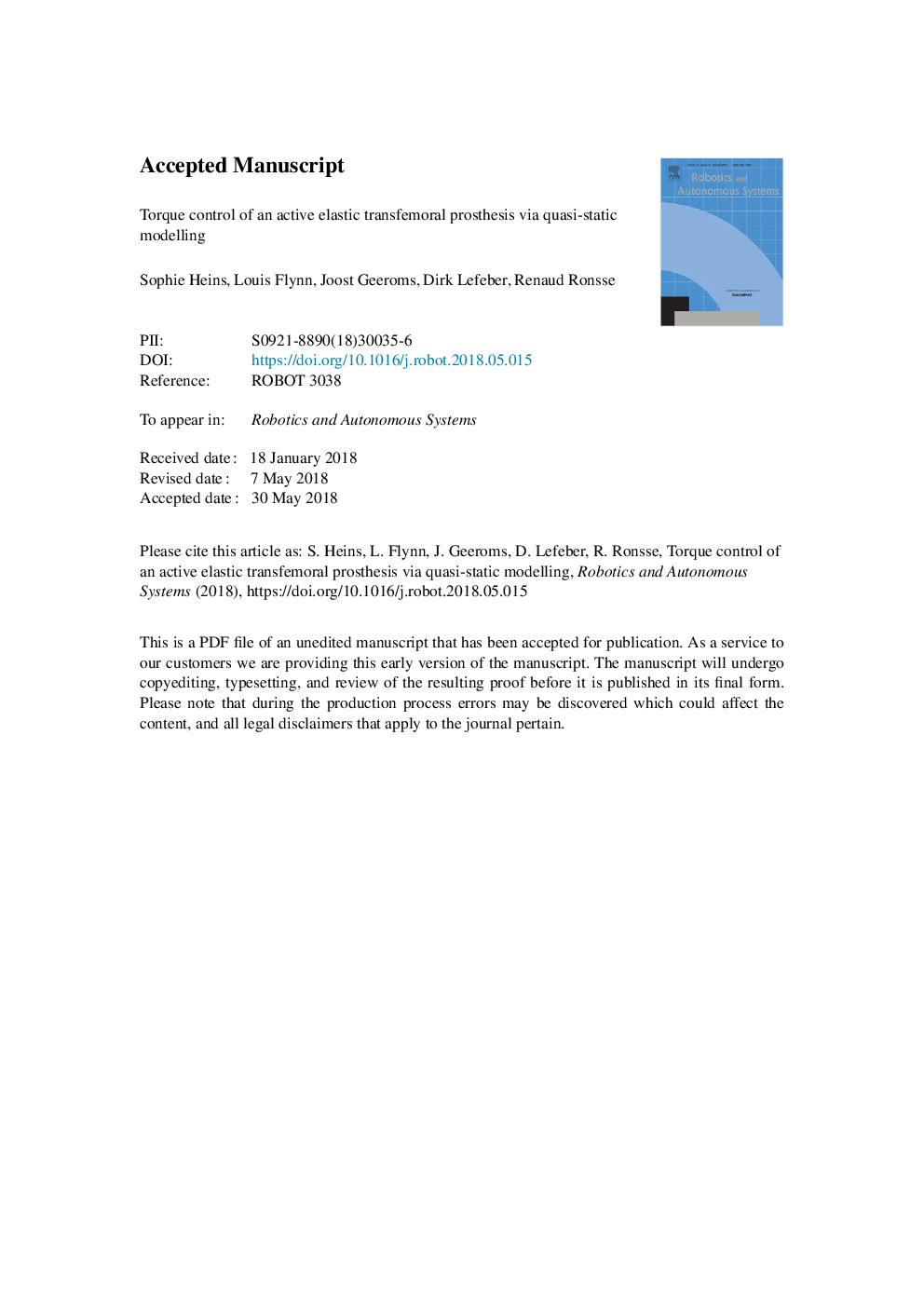| Article ID | Journal | Published Year | Pages | File Type |
|---|---|---|---|---|
| 6867053 | Robotics and Autonomous Systems | 2018 | 57 Pages |
Abstract
Developing mechanical devices to restore natural locomotion for transfemoral amputees still raises many challenges. One of them is the development of an efficient control strategy for the prosthesis active joints, with the objective of making it flexible and intuitive to use. This paper focuses on the transfemoral CYBERLEGs Beta-Prosthesis, an actuated elastic ankle-knee prosthesis embedding bio-inspired mechanisms targeting the minimization of its total power consumption. We provide the development of a bio-inspired, torque-based, controller for this device, requiring no torque sensing. Torque control is achieved by means of static modelling of the prosthesis geometrical and elastic relationships. Bench testing of the prosthesis was performed to show that this static model is able to accurately predict the actual behaviour of the device. The model was then used to build the low-level controller of the prosthesis, converting desired torques into reference positions for the joint actuators. Next, a walking experiment with a transfemoral amputee was conducted to assess the feasibility of a torque-based control approach for the prosthesis, with a simple high-level controller combining reference torque trajectories and bio-inspired joint impedances. Results validated the use of our static model for implementing the low-level controller of such an elastic and redundant prosthesis.
Related Topics
Physical Sciences and Engineering
Computer Science
Artificial Intelligence
Authors
Sophie Heins, Louis Flynn, Joost Geeroms, Dirk Lefeber, Renaud Ronsse,
